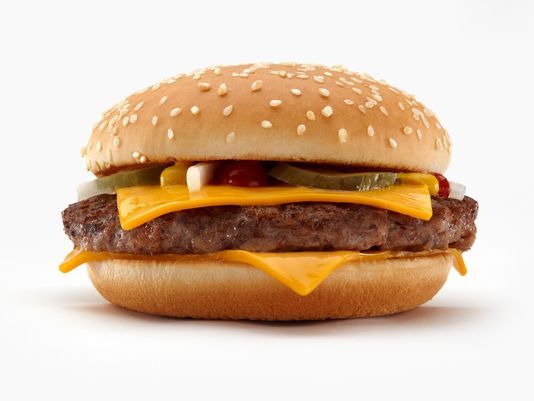Hoping to bring back diners who left in droves in search of tastier food, McDonald’s announced Thursday that it will start making one of its signature hamburgers, the Quarter Pounder, with fresh beef patties.
The announcement follows executives’ admissions earlier this month that “hundreds of millions” of visits had been lost by once-loyal customers who drifted away in search of better quality, convenience and value. By embracing fresh beef for its Quarter Pounders, McDonald’s seeks to head off Wendy’s, a traditional rival, which likes to emphasize its usage of the fresh, not frozen, beef. It’s also edging closer to the so-called better-burger chains, like Five Guys and Smashburger.
The changeover from frozen beef in the Quarter Pounder will begin next year in a majority of the U.S. restaurants at the nation’s largest fast-food chain.
Consumers are demanding more in terms of health and wellness,” said Jack Russo, an analyst with brokerage Edward Jones. “They want to know what’s in their products.”
Other McDonald’s sandwiches, which include the Big Mac and the McDouble, could eventually be made without using frozen beef as well. Having boosted foot traffic with the all-day breakfast and recently promoting different sizes of Big Macs, executives say they are only starting on their mission to improve food taste.
“By no means are we done. This is a first step,” said McDonald’s USA president Chris Kempczinski.
The Quarter Pounder was the first burger line chosen for the switch, because it “is right up there with the Big Mac as we think of iconic products,” he said. “It’s where we have most demanding customers.” The lineup includes Double Quarter Pounder with Cheese, the Quarter Pounder with Cheese Deluxe and Signature Crafted Recipe burgers.
Fresh beef had been tested in 325 restaurants in the Dallas-Fort Worth area and 77 restaurants in Tulsa, Okla. McDonald’s doesn’t break out its sales by individual menu items, but during the test run, the new Quarter Pounder burgers had a double-digit sales increase, according to McDonald’s spokeswoman Becca Hary.
Kempczinski declined to talk about how long the switch to fresh might take for other McDonald’s burgers.
And while nutrition will remain the same, he said, burgers with fresh beef will taste better.
“When you’re cooking a fresh patty on the grill, you need to cook it less,” he said. “Faster cook time on the grill means you have better flavor retention and it comes right off the grill and is delivered to the customer.”
The change in food handling practices and the shorter grill time mean McDonald’s must tweak its how-to manuals for staffers. The charge requires the fast-food giant to update its food safety procedures, such as the proper way to store the patties.
McDonald’s switched to frozen in 1973, because it was a way for the chain, expanding rapidly nationwide, to keep up with consumer demand, Hary explained.
Analyst Russo says the change to fresh beef is in keeping with other improvements from McDonald’s, like pledging to have eggs from chickens that aren’t confined to cages by 2025 and eliminating artificial preservatives from Chicken McNuggets. “I think this will resonate well with people,” he said.
McDonald’s investors reacted positively. The chain’s shares closed at $129.32 up 48 cents or 0.37%.
Earlier this month, the company said retaining existing customers, luring back those who left and turning casual consumers into committed ones will lead to a boost in annual growth of 3% to 5% starting in 2019.
Restaurants in Alaska and Hawaii aren’t making the switch, because of the distance and the logistics involved in shipping there, according to Hary.
by Zlati Meyer

